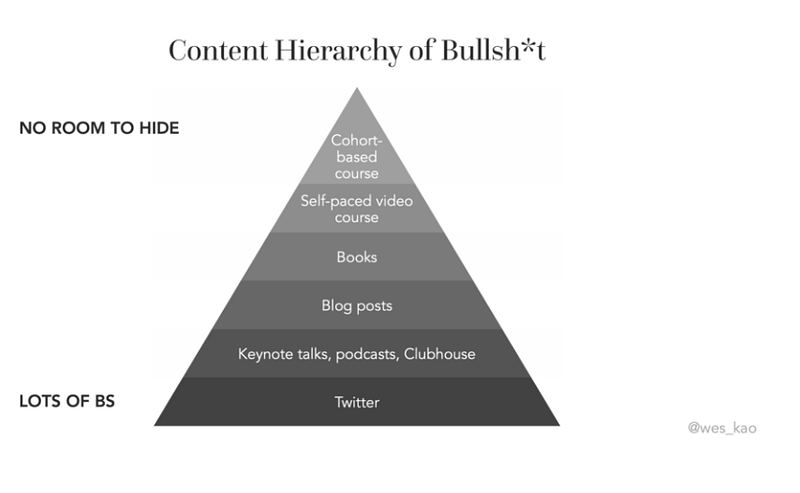Where you start makes all the difference.

Where will you publish your writing?
You face ever-growing options —Medium, Substack, your own website, and LinkedIn, and other publications.
This guide will help you make the right choice on where to start publishing your writing. The choice depends on your context. Some platforms might be more suitable for you than the other ones.
After reading this article, you’ll know the key factors for decision-making, and you’ll feel confident about your choice.
The key question to ask yourself
The most important thing you should look out for is to get sufficient data on your writing because this is what will help you improve.
You want to know which of your posts perform best and how much time people spend on your articles. Comments underneath your posts to learn about your readers’ needs and interests.
Through data, you can analyze your writing and create more from what works well. You can push the topics your readers are genuinely interested in and steadily attract more people.
But to get this kind of data, you need an initial audience of people reading your posts. That’s why the core question you should be asking yourself is: Do I have an existing +10K follower base on any social media platform or +2K newsletter subscribers?
In essence, you can break down all the existing options into this formula: They either distribute your content to their existing audience, or you have to bring in your own people.
You can write the best content in the world, but if nobody discovers your work, it will be worthless. So unless you have an existing audience, the key metric for your decision-making should be whether the platform you choose can help you grow your audience.
Writing on your personal blog
James Clear, Farnam Street, and many other successful writers post their writing on their blogs.
The key advantage of your own blog is that you own your audience. You can do with your blog traffic whatever you like: share affiliate links, advertise brands or sell your own products.
Another argument for blogs is your independence from algorithms. You’re not dependent on platforms to show your work to the readers. And you can design the website in your personal style.
You don’t need to be a programmer to publish your articles online. Content management systems like WordPress, Ghost, or Wix make website building easy.
Yet, unless you have an existing follower base, you’ll need to have a plan to drive people towards your blog. Are you good at SEO or plan to learn it? Can you spare +$2000 dollars and hire freelancers for sustainable traffic strategies? And is your writing good enough so that people will actually read your post once they find them?
When you’re starting out, you don’t know which articles people want to read from you. You might begin with a food blog and realize only later on that you’re not really into the topic. If you write on a blog and change your mind regarding your niche, you might have to start everything again from scratch.
That’s why — unless you have solid data on your niche and some 100 articles in your backlog — I advise against starting on a blog/website.
Writing on Substack
Newsletters are tempting. Platforms such as Substack, a platform for newsletters where subscribers have to pay for the creator if they wish to receive the recurring content, are on the rise.
Substack has grown from 0 to 1,000,000 paying subscribers within its first 4 years on the market. According to Hamish McKenzie, the co-founder of Substack, the top 10 publications of the platform together bring in more than $20 million per year.
“When you look at the economics of newsletters… If you can find 10,000 people to pay you $100 a year, you’re making $1 million a year. No one in media is going to pay you that.”
— Casey Newton, Platformer
Other success stories include Scott Hines, who grew his email list to 1,000 in less than a year. He writes personal essays about life, parenting, sports, and architecture. Scott says he started from scratch.
Yet, substack doesn’t help you gain an audience. You’ll have to bring in people on your own.
One of the most common Substack advice is to reach out to your family members, friends, colleagues and ask them to subscribe (out of solidarity).
Many of the people who experienced rapid growth on Substack, had an existing audience when they started their newsletter. So unless you can bring an audience from another platform, I’d advise against starting on Substack.
Writing on Linkedin
LinkedIn has 774,61 million active users and the platform is expected to reach 1,034.56 million by 2025. LinkedIn is the go-to platform for networking in the business world, and it can offer a large audience.
There’re two ways to write on LinkedIn in 2021. You can either publish articles or posts. Articles are in-depth pieces, while posts are quick ideas.
LinkedIn articles can be an option for you if you have an existing audience within your niche and you know which content works well for them. With that, you can get initial traction of people commenting and being interested in your content.
Yet, long-form articles mostly don’t perform well on LinkedIn even for people with a large follower base. You also won’t get paid anything on LinkedIn for writing, regardless of how many people have read your work.
Short-form posts can help you gain followers if you go viral or semi-viral. Yet, short writing mostly lacks in-depth information and expertise. To build authentic relationships and a loyal follower base, you’ll have to provide more valuable content to your audience than ‘few hundred words long’ social media posts. As on most social media platforms, creators fight for the attention of the users on LinkedIn as well.

If you want to build a loyal audience that values depth and clarity, I don’t recommend starting writing on LinkedIn. While the platform can be a growth tool to drive traffic towards your content, it’s not the best place to practice your craft.
Writing on Medium
Founded in 2012 by Ev Williams, the co-founder of Twitter, Medium users have grown steadily. The platform has gone through several changes through the years, including the introduction of the Partner Program, which allows writers to earn money based on members’ reading time.
In 2021, Medium proportionally reduced its paid journalists and started to support independent writers.
On Medium, publishing is frictionless. You tap into an existing audience of people interested in long-form content— unlike LinkedIn, where people mainly go to network and scroll. Through publications, comments, and curation, you receive feedback on your writing. Data on reading time, views, and the reading ratio will help you improve.
Plus, you don’t have to spend time building your website, doing SEO, and finding sponsorships or affiliates for your website. You get paid based on the user’s reading time on your articles.
Many creators complain their earnings aren’t in alignment with their time and energy investment. Indeed, only the top 10% of the writers regularly earn more than $100.
My income on Medium varies from $1,500 to $5,000 — but even if Medium wouldn’t pay me a single cent, I’d write on the platform. I get thoughtful comments and 10 to 25 e-mail subscribers a day.
I see the platform as a tool for testing and improving my writing and building an audience. The income is a nice side effect. If you’re starting out, the platform can offer you many growth and learning opportunities.
Conclusion
To make the best decision on where to publish online, you’ll have to consider the size of your audience.
While it makes sense to redistribute your 10k+ social media following to a paid newsletter subscription or to a blog filled with ads and affiliates, if you’re starting from scratch, it’s easier to tap into the audience of already flourishing platforms.
Do you want to build a consistent writing habit?
Pre-register for the next cohort of my writing online accelerator. You will transform into a consistent writer to attract an audience, create career opportunities, and become a better person. Find more details about the next launch date here.